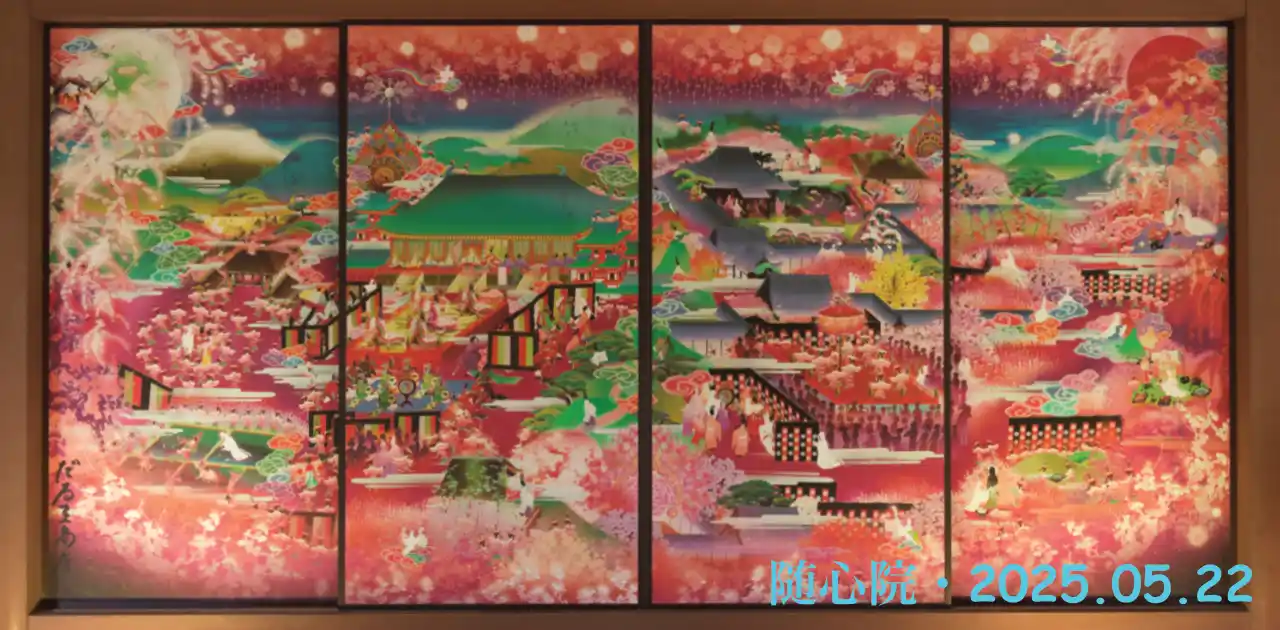Last updated on 2025-11-11
“A temple associated with Ono no Komachi”
Table of contents
- Please see the disclaimer regarding advertising here.
- Italicized links in the text are advertisement links that take you to other sites.
Zuishinin-in
Overview
- Temple name: Zuishin-in
- Location: Ono, Kyoto Prefecture, 5 minutes walk from Ono Station on the Kyoto subway
Cultural properties include the important cultural property wooden seated Nyoirin Kannon Bodhisattva (principal image), the Kamakura period seated Vajrasattva (by Kaikei), and the wooden seated Amida Nyorai (by Jocho). Details of the temple treasures are written on the official Zuishinji website.
Inside the temple, signs are posted in areas where photography is prohibited, such as the inner sanctuary and the sliding door paintings, but photography is permitted in other areas.
Please note that the “Okushoin Renovation Work (scheduled for May 12, 2025 to the end of March 2027)” is being carried out from May 12, 2025, and some of the sliding door paintings, including the ink-wash painting “Taketora-zu,” will not be viewable.
Review and Gallery
On the day of our visit, the weather was clear, and we arrived at the main gate after a five-minute walk from the station through the small streets.
Zuishin-in Temple had just finished hosting the 2025 Spring Special Exhibition of Cultural Properties Not Open to the Public, so there were few visitors and the temple was quiet.
We walked along the side street of the plum grove, checked in, and entered the temple.
As we walked toward the main hall, we saw a palanquin floating overhead. When we reached the main entrance, we could see what looked like an entrance hall and the Yakuimon Gate opposite. In the front shoin, we could view a folding screen painting by the Kano school, but the sliding doors were closed on the day we visited.
In the Noh room, the 2009 Daruma Shop with the Brilliantly Colored Illustration of Ume Nigo Komachi, was on display, depicting events at Zuishin-in Temple in vivid colors.
The inner sanctuary of the main hall at the very back is not open to the public except during special openings, so we prayed from the outside. The wooden seated statue of Avalokitesvara Bodhisattva (principal image) in the center is usually not open to the public and the doors are closed. Looking across from the main hall is the garden and pond, and seeing the depressions in the lawn in the garden caused by raindrops falling from the roof, I was impressed by the power that comes from persistence and the strength of the grass that continues to grow even after being hit.
Summary
Since the temple is not so large, it is easy to visit, and there are many things to see such as the Buddha statue and the paintings on the sliding doors. As it is connected to Ono no Komachi, many of the offerings are colorful and beautiful.
It is located in the Daigo area, far from the center of Kyoto, and in Kyoto as of 2025, it has become difficult to get around tourist spots by bus, so it is appreciated that you can visit it by the relatively spacious Kyoto subway.
Near the center, there is the Goyamashina Mausoleum of the 60th Emperor Daigo, about a 10-minute walk away, and Daigo-ji Temple, about another 10-minute walk from there, so you can visit both.
Reference links
- Zuishinin-in・公式ページ
- Zuishinin precincts map・公式ページ
- Zuishin-in Temple Treasure・公式ページ
- Notice of renovation work on Zuishin-in Temple’s Okushoin Library・公式ページ
- 60th Emperor Daigo Goyamashina Mausoleum・公式ページ
- Daigoji Temple・公式ページ
Update history
- 2025.5.29
Photo equipment
Affiliate links
- Please see the disclaimer regarding advertising here.
- Italicized links in the text are advertisement links that take you to other sites.
- Zuishinin-in・Ads by Amazon
- Zuishinin-in・Ads by Rakuten



Be First to Comment